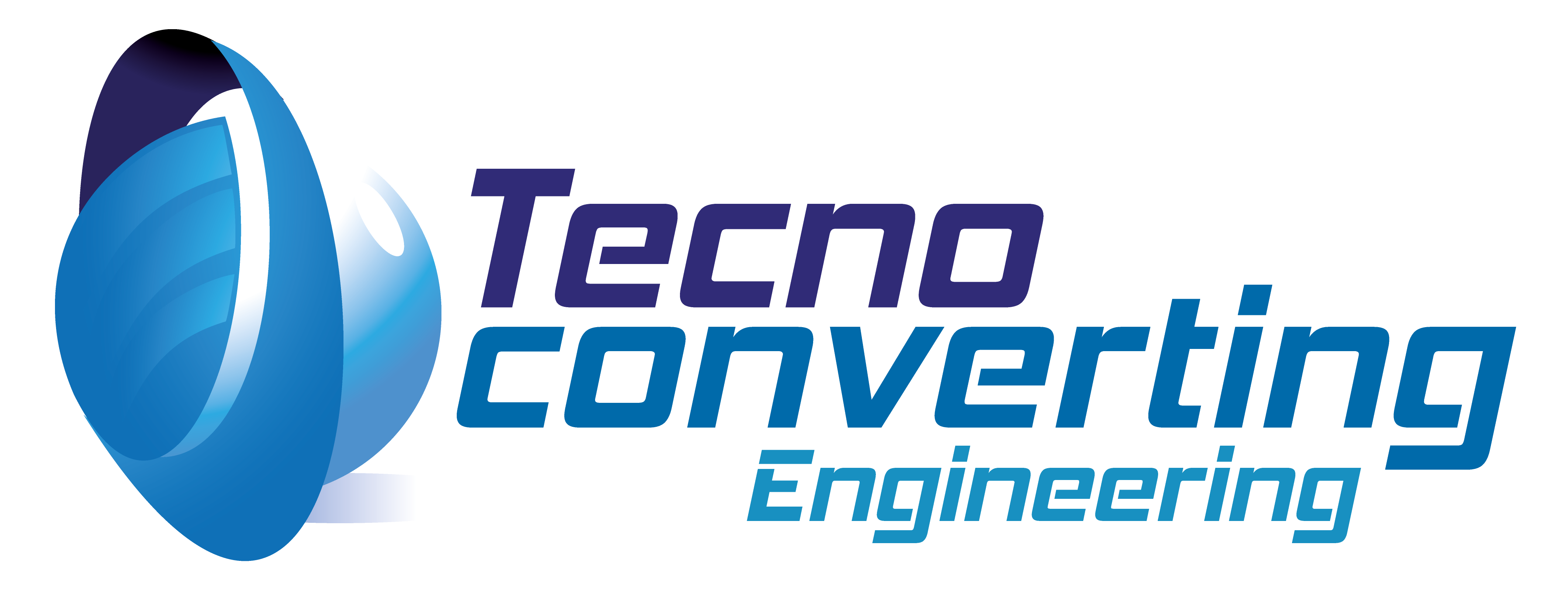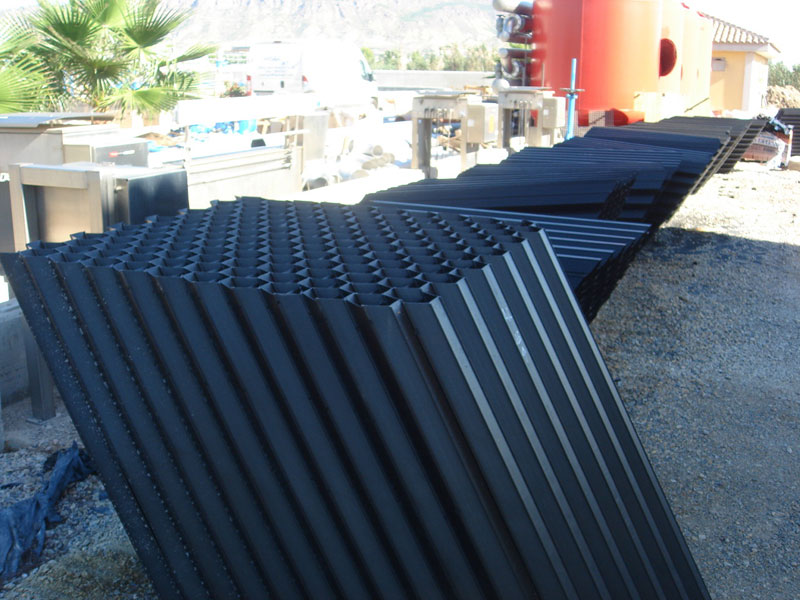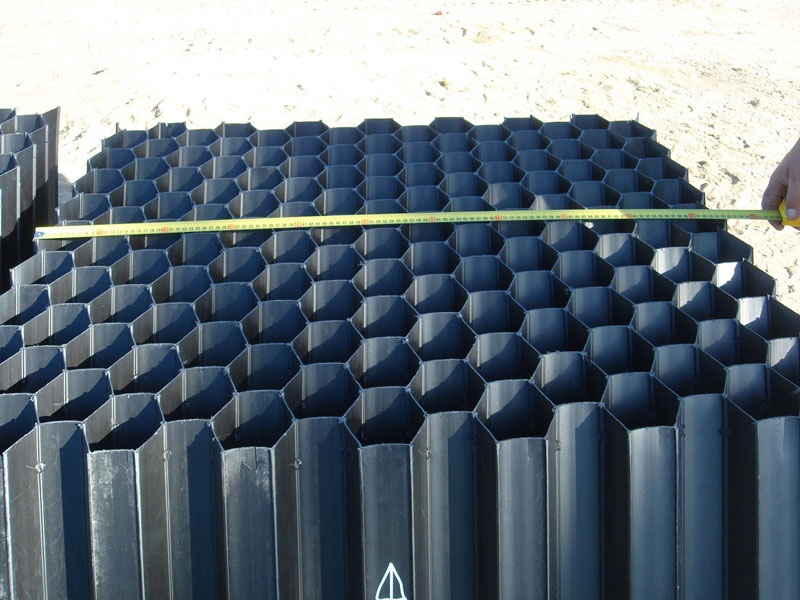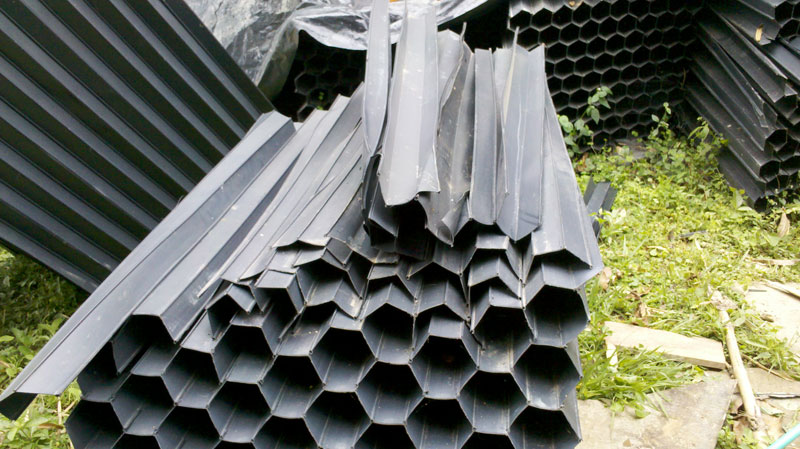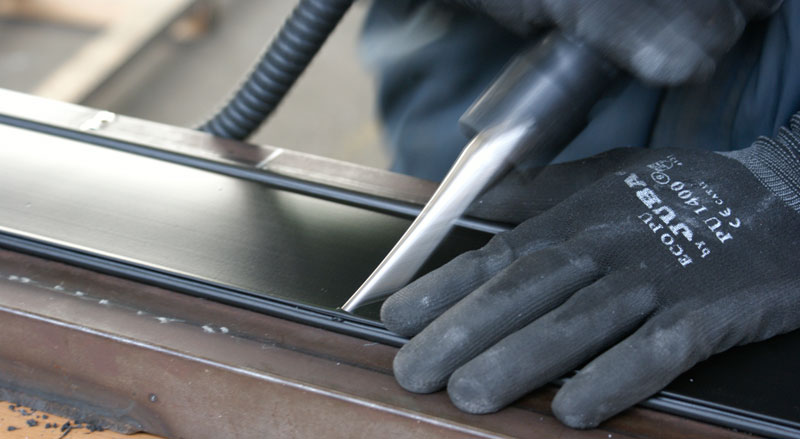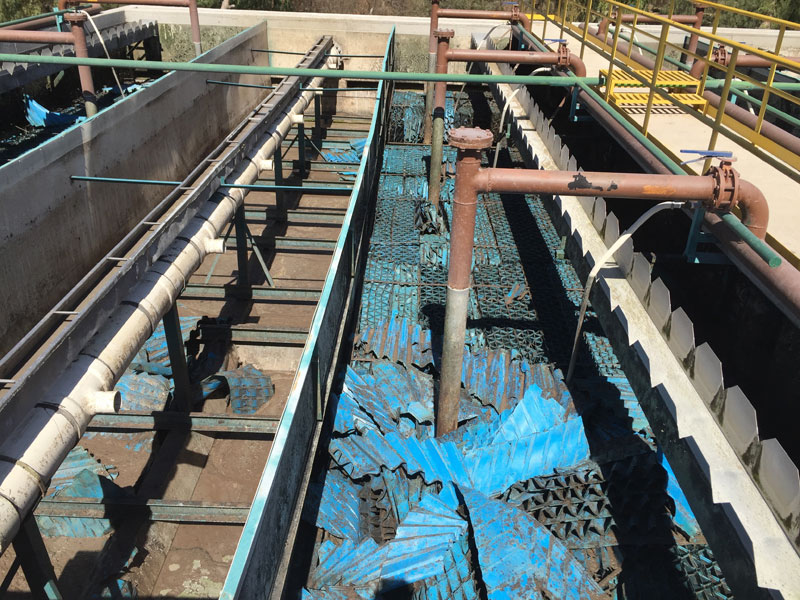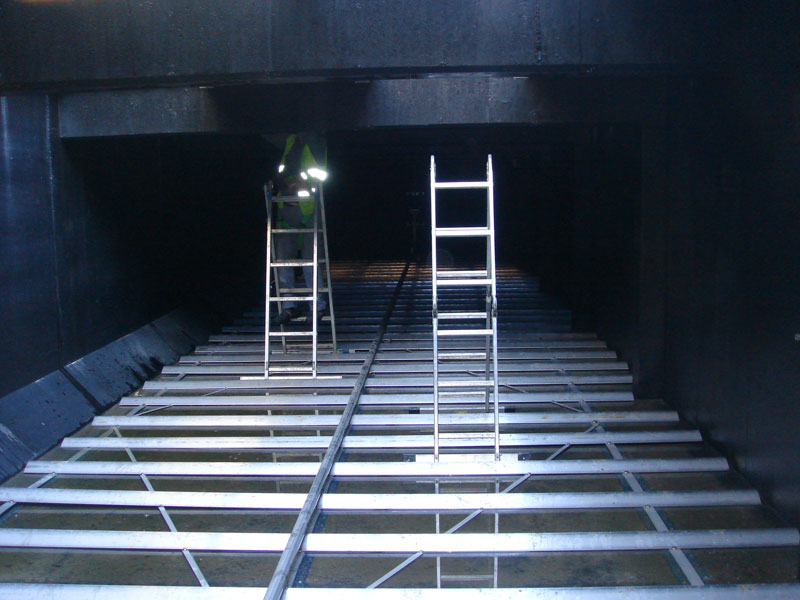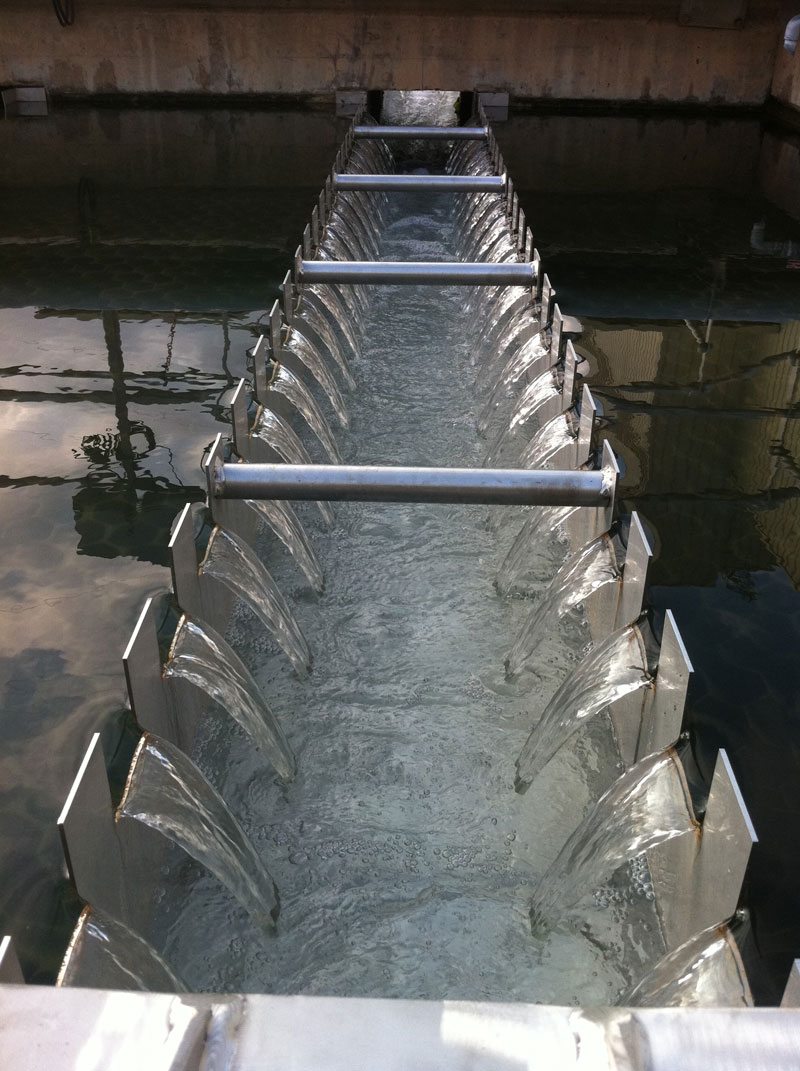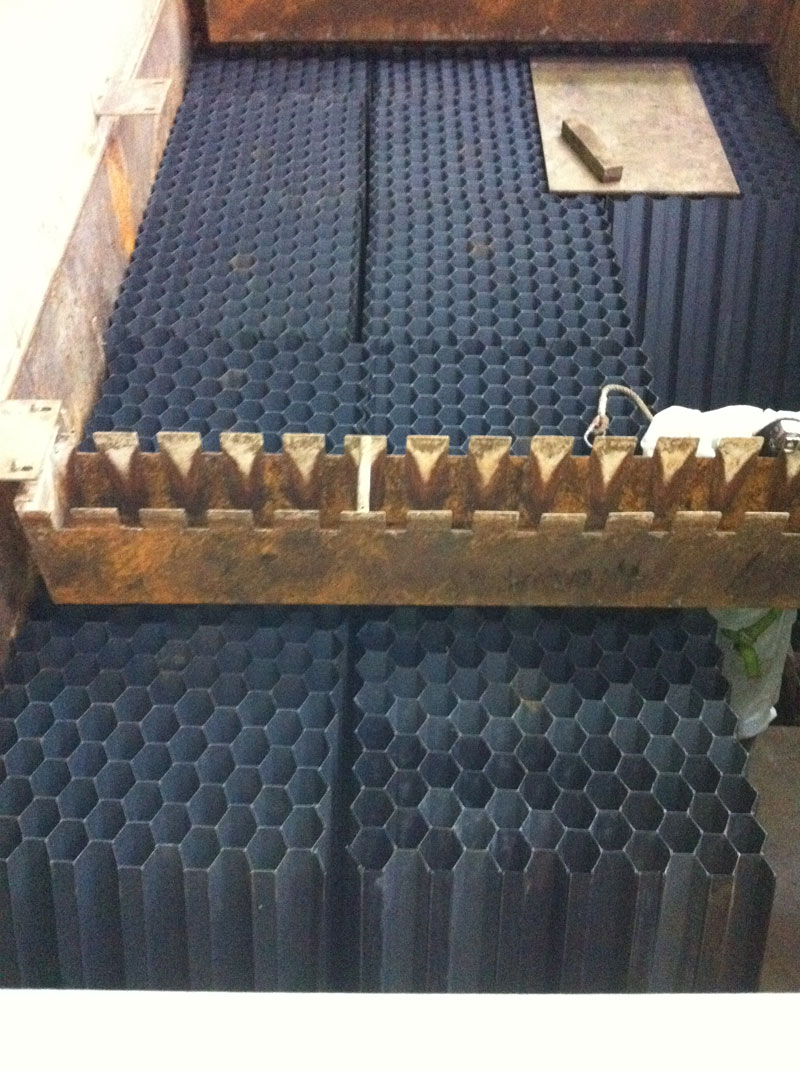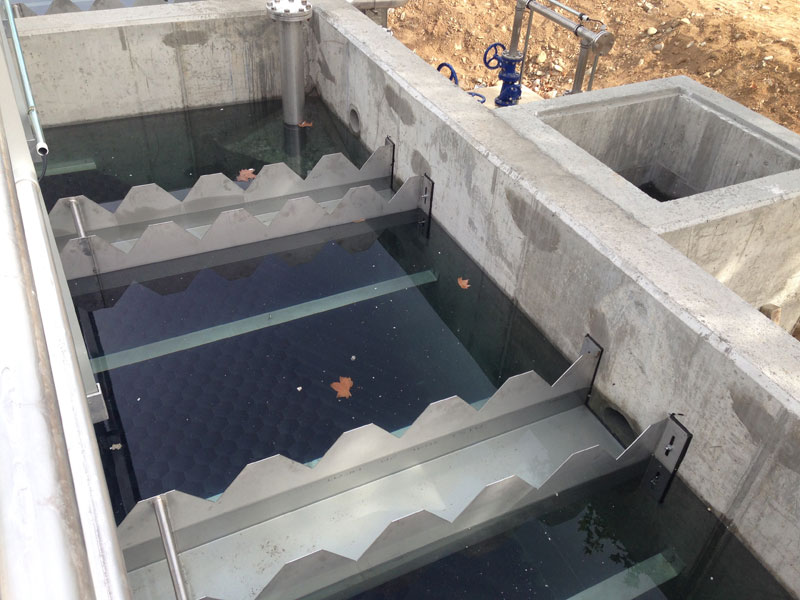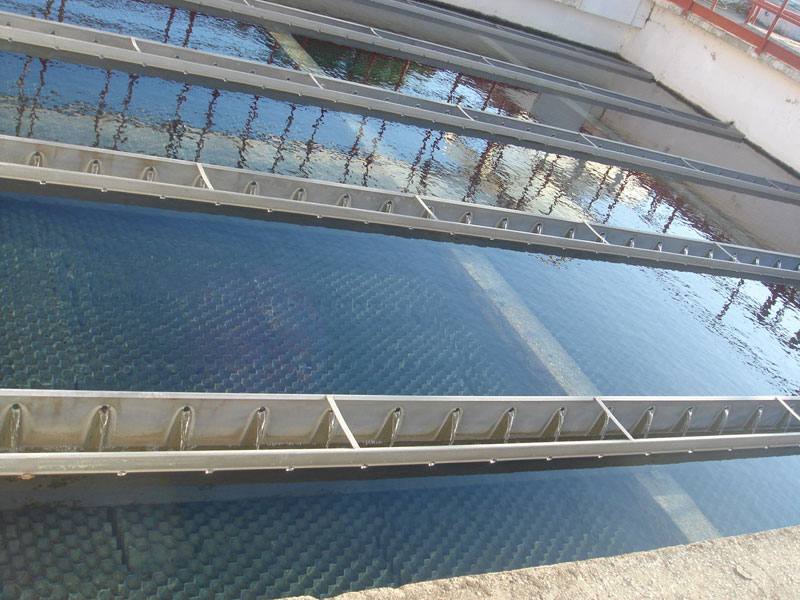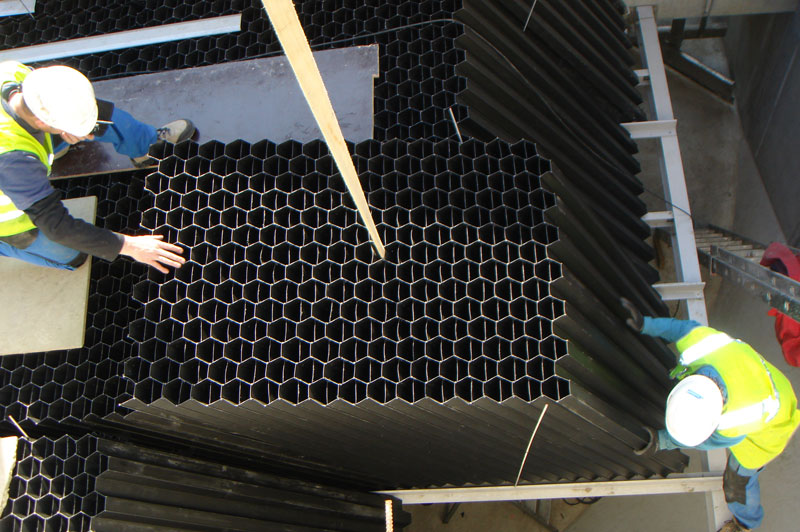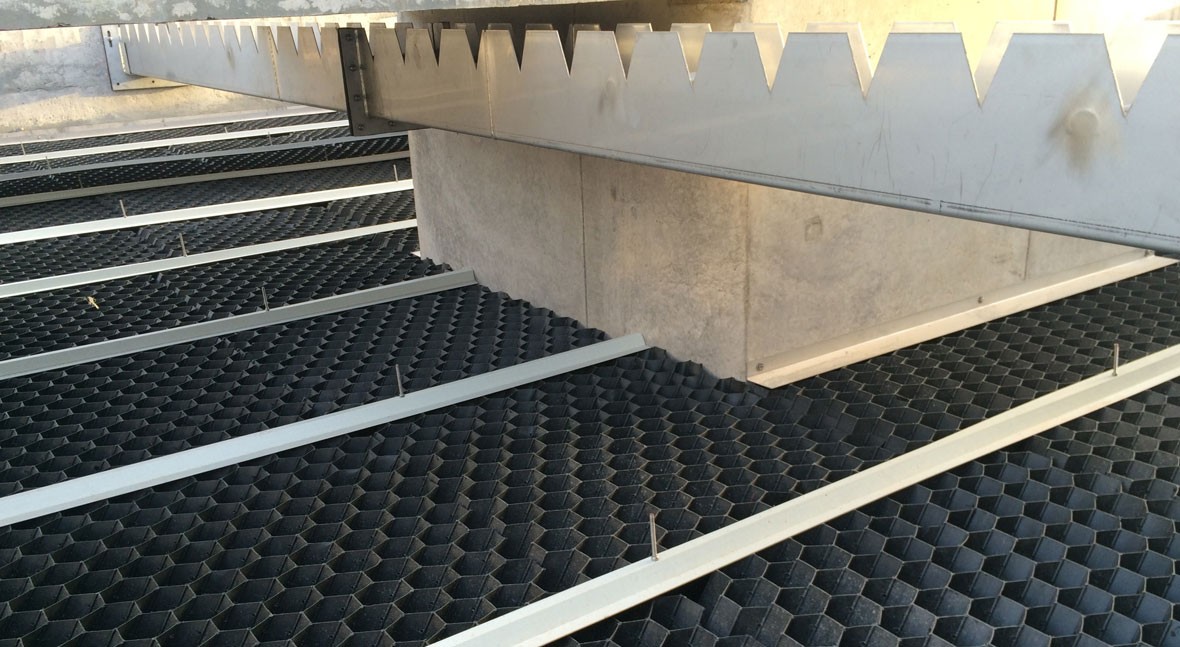
Lamellar Modules: Maintenance Manual
posted in Technical Articles by TecnoConverting
How to clean lamellar modules in order to improve their performance? This manual answers all questions to help you preserve your equipment.
- Author: David Barquet, CEO of TecnoConverting
Water and suspended solids create preferential channels within the clarifier. These preferential channels are basically zones that, because of their geometry, are chosen preferentially by water and suspended solids as path to flow through. As a consequence, not all lamellar modules work evenly. In other words, some parts of the clarifier work better or worse than others. Because of these preferential zones or paths, suspended solids tend to accumulate, leading to channel obstruction and with time, some areas of the clarifier become saturated with sludge. Consequently, some areas within the lamellar module can exceed up to 20 times the weight of the lamellar module itself. The excessive weight of the accumulated sludge overloads the lamellar module supporting structure, with a risk of eventual collapse.
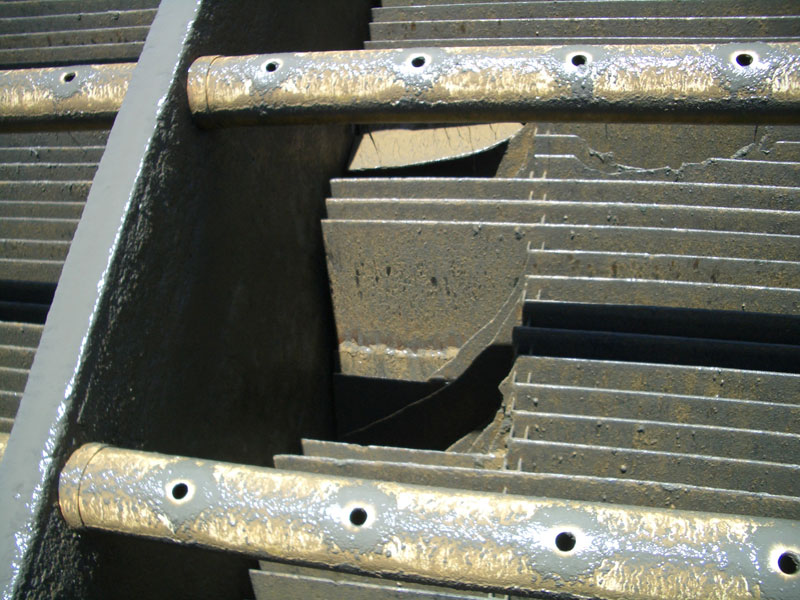
Typical breakdown in lamella clarifiers
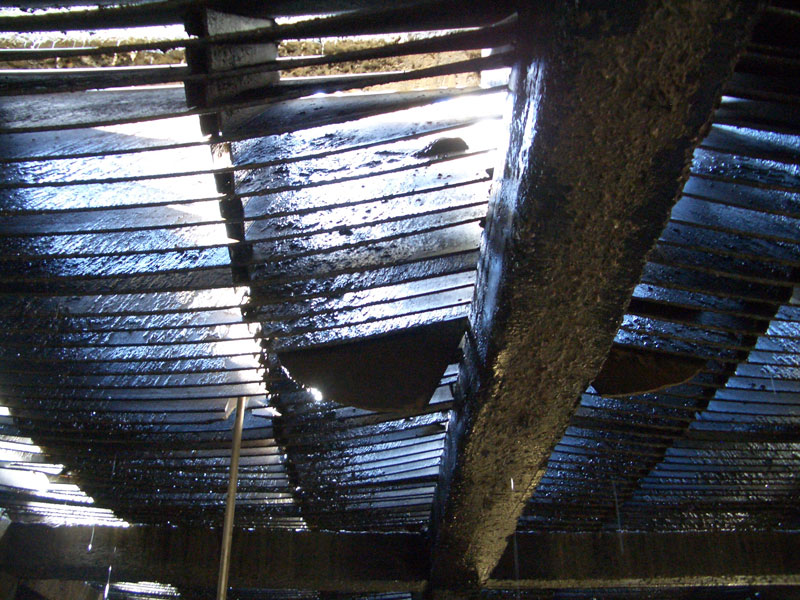
Typical breakdown in lamella clarifiers
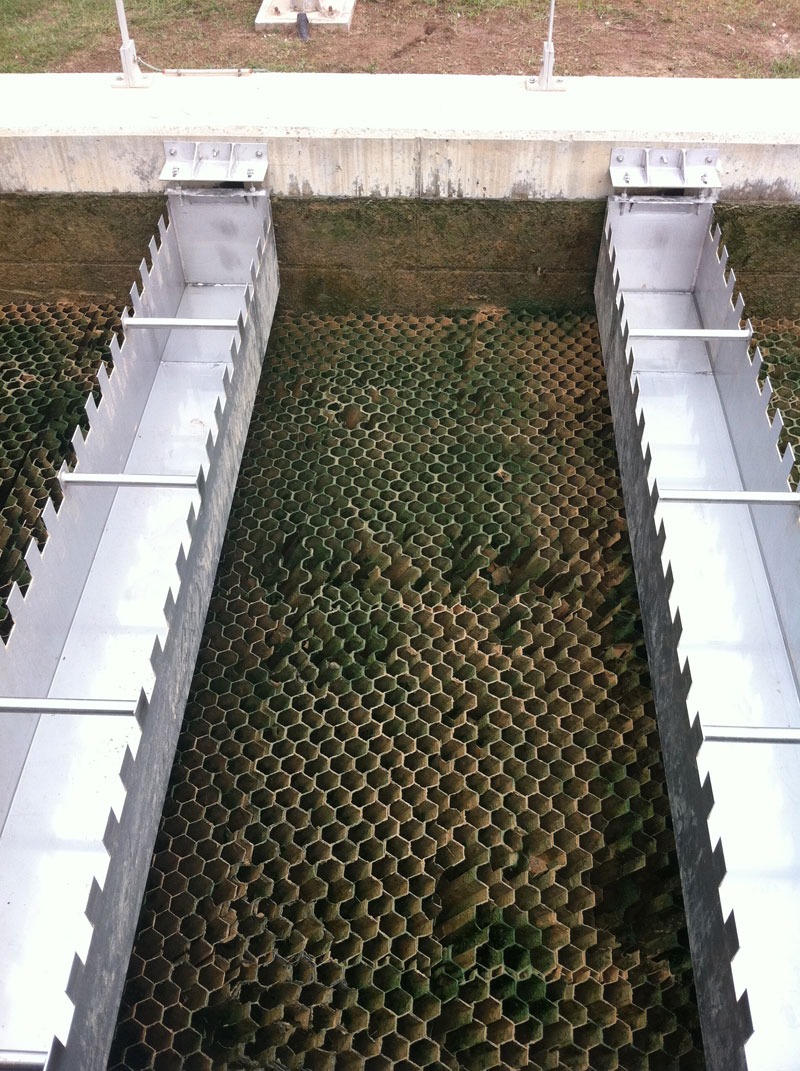
Lamellar module worn out by cleaning
Common causes of lamellar module obstruction
It is quite common for algae, sludge, etc. to adhere to the walls of thermo-plastic lamellas due to a variety of reasons:
- High concentrations of suspended solids.
- Chemical reagents such as flocculants, coagulants, etc.
- Uncontrolled discharges (hydrocarbons, oils, etc.)
- Failure to adjust the size of the lamellar module depending on the type of water to be treated.
- Preferential channels within the lamellar modules.
- Unfit sizing of the clarifier.
- Improper maintenance of the lamellar module.
This manual explains the cleaning procedure to carry out during technical stops in order to improve the performance of the lamellar modules and ensure a greater longevity of the installation.
1-mm-thick lamellar modules
1-mm-thick lamellar modules
TecnoConverting 1-mm-thick lamellas are assembled through multi-point spot ultrasonic welding. This system provides each lamellar profile with at least 5 welding points. This technique achieves excellent lamella stiffness, making it easier to mount them inside the clarifier and ensuring greater durability of the equipment.
Important: avoid using adhesives on the lamellas, no matter if they are special PVC glues or any other special adhesives. These products are usually intended to bind temporarily and tend do wear with time when in contact with water, leading individual lamellas to eventually detach from the lamellar structure.
The same happens with lamellar modules that are attached to each other with staples. Even though companies using this system of union are not frequent, they do exist, especially in countries like France. The use of staples, despite being an extremely fast bonding method, causes the packs not to be as rigid as the models assembled through multi-point spot welding.
Lamellar packs welded WITHOUT ULTRASOUND
Lamellar packs welded WITHOUT ULTRASOUND
Emptying procedure
1.-While the decanter is still filled with water, start spraying the surface of the lamellar module with pressurized water: pressure should not exceed 6/8 bar. Modules should be washed on an ongoing basis. Therefore, we recommend to have more than 1 worker carrying out the cleaning.
In order to water down the lamellas correctly, it is recommended that the maintenance workers walk on the surface of the lamellar modules using wood. In this way, modules are prevented from breaking. These ruptures do not influence performance but they affect the visual aspect of the installation.
As the surface of the lamellar module is being sprayed, the water level in the clarifier must descend progressively, especially while the descent affects the length/height of the modules. Close the valves (for short intervals of time) to ensure homogeneous washing. This will dilute any organic matter deposited/adhered on the walls of the pipes and avoid its drying that could reduce the particle slippage, thus impairing the effectiveness of the process.
2.- During the emptying of the clarifier, don’t stop spraying the water from the surface downwards, and keep the scraper in operation and the sludge purge pumping because the process tends to produce a lot of solid sedimentation. Perfect sludge collection will ensure greater lamellar performance.
3.- Once the clarifier has been emptied, proceed to internal inspection of the equipment. To enter inside the clarifier, you can remove one of the lamellar packs to place a staircase or any other appropriate element to help you go down. It is usually necessary to disarm part of the antiflotation system (AFS) to be able to remove the module.
Parts of the clarifier that need reviewing
- Supporting structure review: if the structure is iron-made, check for any sign of corrosion or degradation..
- Review the structure-supporting brackets to ensure that the profiles are correctly fastened to the walls of the clarifier.
- Make sure that the lamellas are properly leaning on the supporting structure.
- Find out if any of the areas in the lamellar module are still clogged with sludge. Should it be the case, make sure to clean them insistently as they will be the most prone to mud accumulation, which can affect the supporting structure.
- Review the bottom scraper, its state, the wear of wheels or skates, the state of the concrete… Find out if any replacement is needed
Lamellar module in poor condition due to an increase in the load of sludge.
Lamellar module in poor condition due to an increase in the load of sludge.
It is important to clean rain gutter channels, especially if they are tubular and with holes.
A lamella clarifier operating properly.
Clarifier remodeling
Lamellar module operating properly
Water-filling procedure
When filling the clarifier, it is of the utmost importance to proceed slowly and to make sure that lamellar modules have an antiflotation system (AFS). During the filling process, hydraulic thrust is extremely powerful and can push modules out of the supporting structure.
These movement problems only appear in the following three cases:
- While emptying the clarifier..
- While filling the clarifier..
- During uncontrolled discharge causing greater hydraulic thrust.
During the filling process, the scraper or sludge extraction system must remain in operation.
Recommendations
- Before entering the clarifier for inspection purposes, we recommend to make sure that the supporting beams of the lamellar modules have not yielded: sometimes when designing the support structure, only the weight of the lamellar module is taken into account, leaving aside the weight of the sludge. But 1m3 of lamellas, when empty, may weigh 50 kg, however, with 100% sludge, it can weigh up to 1,300 kg. For safety reasons, we recommended to check the supporting structure before entering the clarifier.
- The plant operators know their sludge production and will safely determine when the clarifiers need cleaning. However, we recommend carrying out maintenance at least 1-2 times a year.
- Once the clarifier is clean, it is absolutely necessary to refill it with water. Otherwise, continuous and long-term exposure to the sun may alter the molecular chain of raw materials, causing damages or deformations on the medium term.
- Even if our lamellas present a constant thickness of 1 mm, they are protected against UV and welded with our system of reinforcement by points, it is advisable to strictly respect the previous recommendation.
- Should the modules need to be left outdoors without water for longer periods of time, we recommended covering them with a tarpaulin to avoid direct contact with the sun.
- Please consider that a lamella clarifier produces approximately 4 times more sludge than a clarifier without lamellar modules. Based on this, it is indispensable to equip the clarifier with a perfect lower sludge extraction system to prevent it from collapsing and avoid the sludge to invade clean water collection channels.
Lamella clarifiers
Lamella clarifiers
